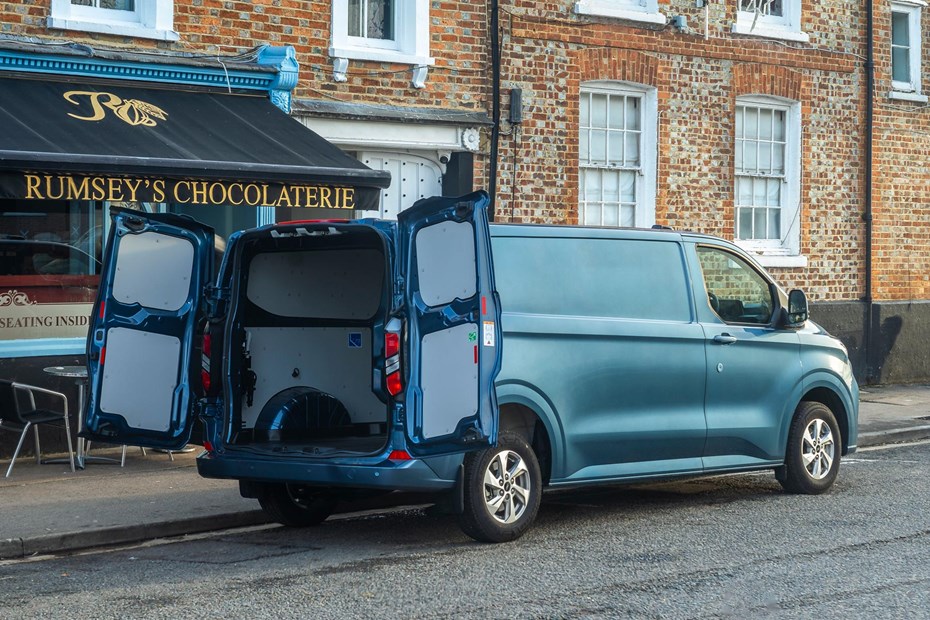If you are buying your first light commercial vehicle then you might well be confused by all the different terms that are bandied around when talking about the parts of a van. Vans are some of the best selling vehicles out there, so here is what you need to know if you are buying your own.
What is a bulkhead? What does racking do? Do I need to know what size a Euro pallet is and how big is it? These are all questions that come up in your early forays into buying an LCV. All are parts of a van, or are specifically related to an LCV’s dimensions. Understanding what they are will make your buying journey a lot easier.
We’ve got the answers to all this and more below.
If you want to know more about commercial vehicle weights or the van-specific speed limits then we have got that covered elsewhere.
What on earth are van people talking about?
Below are the sort of terms that you might hear people using when they are talking about commercial vehicles or pickup trucks. We’ve concentrated on light commercial vehicles, or LCVs, but some of these might well crop up if you are looking at a larger van or truck as well.
Barn doors
These are doors on the rear of the van that are hinged at the side and open outwards. The hinges are often releasable so you can fold the doors out to 180 degrees or all the way around to 270 degrees so they lie flush with the side of the van.
They might split 50/50 or be biased more towards one side or the other. This would normally mean that the door that opens first is the biggest, so you can get larger items into the back without having to open both doors.
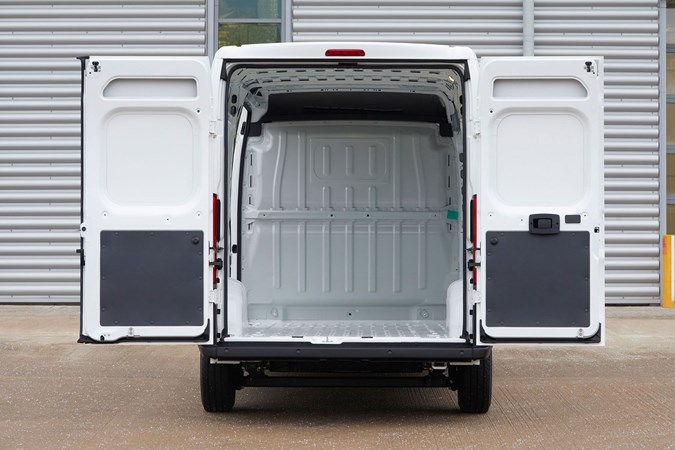
Bulkhead
Most vans have a bulkhead and it plays a very important role. It is the divider between the cabin and the cargo bay and it keeps the contents in the latter from flying forward into the former.
They come in different materials – steel is common, although reinforced plastic can also be used. They aren’t always totally solid, though, as some have mesh grilles at the top or all the way down. Some also feature glass windows so you can use the rear-view mirror or take a quick look at the contents of the loading bay.
You can even get a moveable bulkhead – this is handy in a vehicle like the Citroen Berlingo Crew Van as it allows you to increase or decrease your loading bay.
As well as being a safety feature, vans without a bulkhead, or with a grille divider, tend to be a lot noisier than ones with a solid bulkhead.
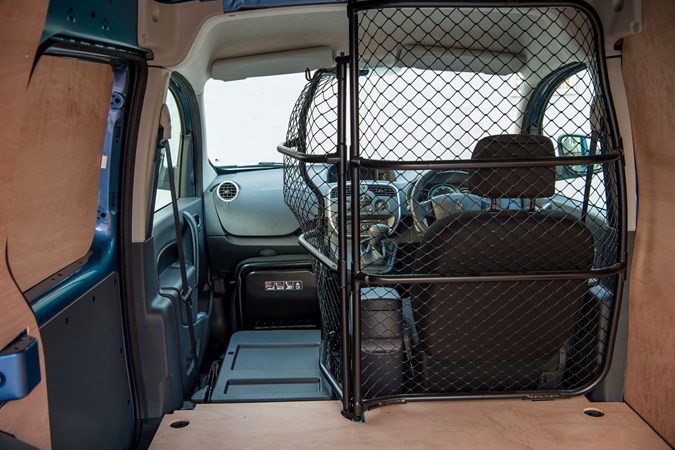
Cabin
This one is simple – it’s where you sit. You can either have one row of seats, with space for two or three, or two rows with space for up to six in total.
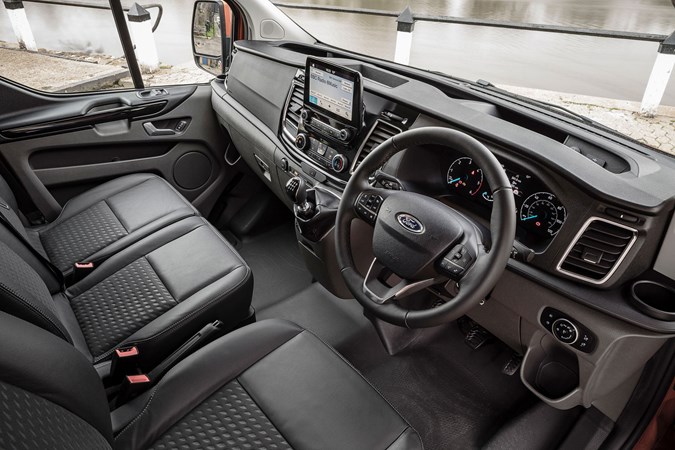
Euro pallet
This isn’t a part of a van, but it is vital to understanding how big the back of a van is. Pallets, used for transporting goods at industrial facilities, using forklift trucks and the like, are a standardised size in Europe – 800mm x 1,200mm.
This means that they are a useful measure for how practical a van’s loading bay is. Small car-derived vans like the Ford Fiesta Van can’t take any, while huge vans like the Ford Transit can take as many as five.
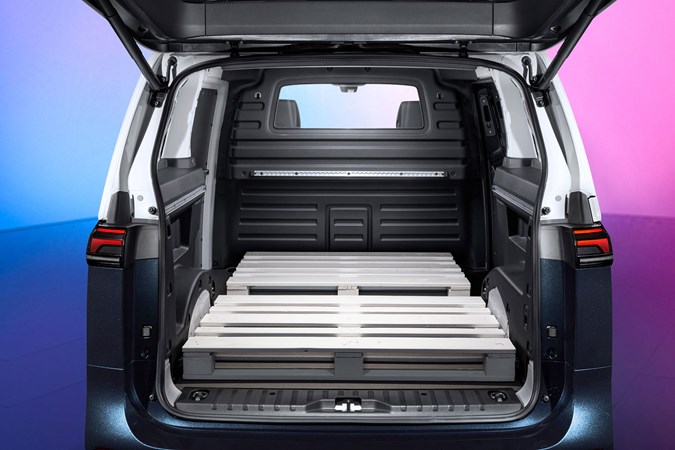
Frails
This is a word you might not hear very often but you have definitely seen a set of frails in use. They are rails and fixtures fitted to the side of a van that are used as an additional rack to transport tall and thin sheet-like items like glass.
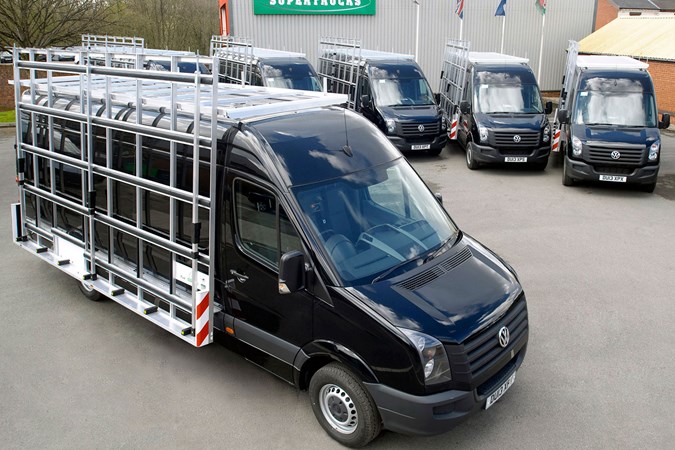
Lashing hooks
These small hooks are found in the loading bay of a van and are designed so you can tie down loads so they don’t slide around in the back while you’re driving around. They tend to be found in the corners of the bay, but there are often more along the sides on the floor. You can also sometimes find them half way up the sides.
Load space / loading bay
Simply, this is where the things go in your van or truck.
Load-through hatch
Some vans will have a small hatch that gives you a little opening between the loading bay and the cabin. This is located under the passenger seat and lets you carry longer, thin, items that wouldn’t otherwise fit into the loading bay. It means you can take items like poles, pipes or ladders without having to strap them onto the roof of the van.
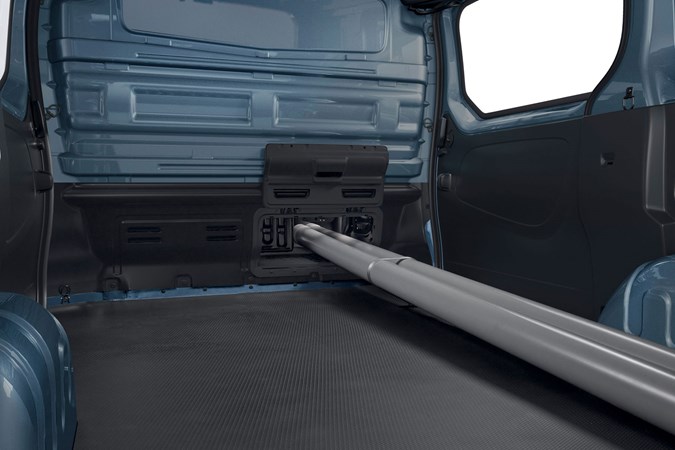
Lining
Vans don’t come with much in the loading bay as standard, with a coat of paint on the metal normally as much as you get.
You can get a selection of different linings installed to protect the metal, and the things that get carried in the back. Plywood is a common and more affordable option, as it can take a load of abuse and then be replaced when it gets too badly damaged. You can also get rubber, reinforced plastic or even carpet for a more luxurious finish.
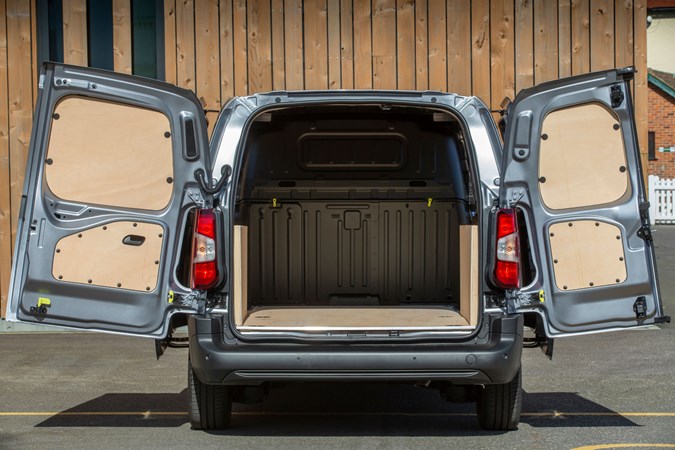
Racking
Plenty of businesses need more bespoke storage systems than just an empty box so the first thing they do when they take delivery of a new van is send it off to get some racking installed. This often consists of a series of storage solutions, like drawers, cupboards or workspaces.
Racking can be, and normally is, removed before a van is sold.
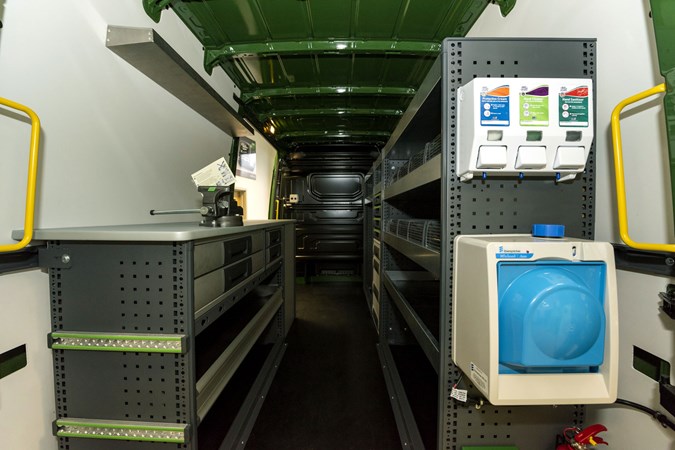
Roller doors
These are rear doors on a vehicle, usually on a conversion like a Luton Van, which slide vertically so they can be stored up and out of the way when you loading and unloading. They have several benefits, not least that they don’t need loads of space to be opened.
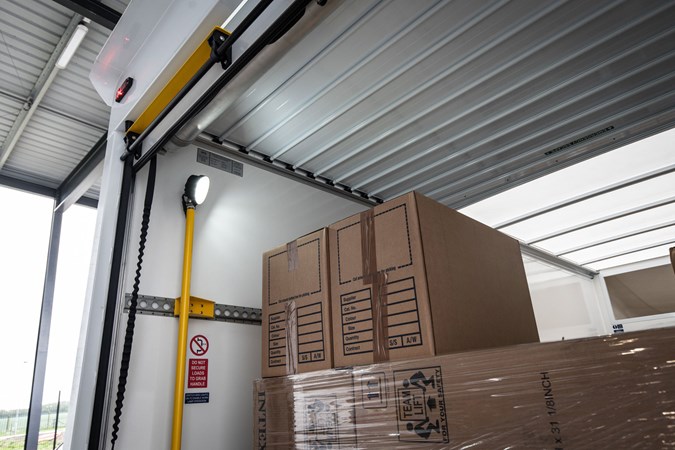
Side-loading doors
A van will normally have at least one sliding door that will allow you to access the loading bay from the side.
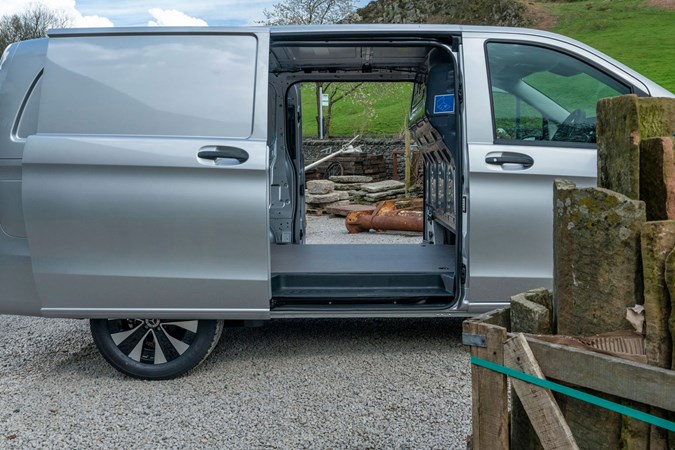
Tailgate
This is the panel at the rear of pickup trucks, dropsides and tippers which stops goods falling out of the back of the load area. On pick-ups and dropsides it is hinged at the bottom for easy loading, while on tippers it is hinged at the top so your payload can slide out.
You can also get a top-hinged door on a van, which you usually have to pay extra for. This is something that is usually favoured by lifestyle buyers as it gives you a handy place to stand to shelter from the rain during your picnic or while you get changed after your bike ride or surfing trip.
They are less practical for working users though, as you need a lot of room to open them and it is almost impossible to get a forklift truck up close enough to load a Euro pallet.
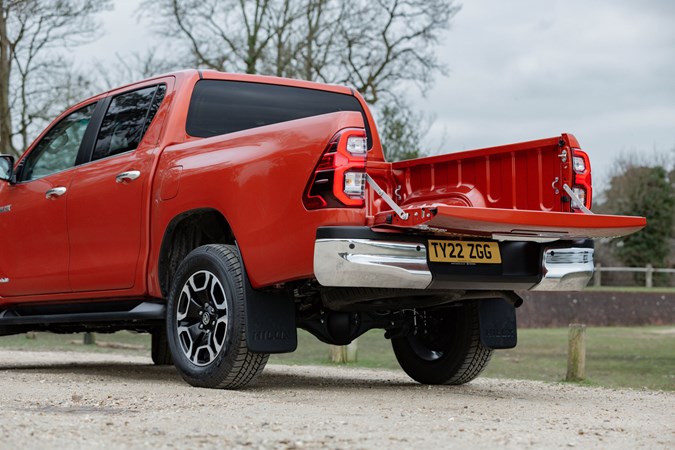
Tail lift
This is something often seen on Luton vans and is a hydraulic platform that is used to lift heavy goods to the height of the load area or to lower them safely down to the ground.
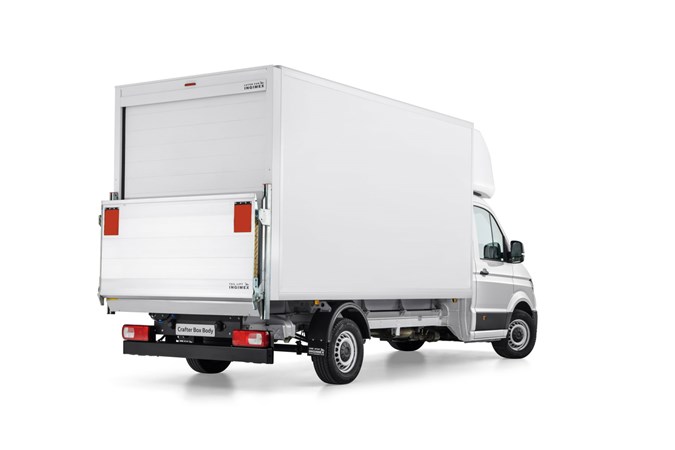
Wheelbase
The distance between the centre of the front wheel and the centre of the rear wheel. The longer the wheelbase, the more space you’ll have in the van.
Still got some burning questions? They might well be covered below…
FAQs
-
What is the load area of a van called?
Strictly speaking there isn't a precise and universal name for the load area of a van, but you tend to find it called one of a few things. It's often referred to as a loading bay but you might also hear it called a storage area, a load space or indeed a load area. You could even call it a boot, if you like, but that's generally reserved for a car. They are all the same thing and refer to the part of a van where you put the things you want to carry around.
-
What do you call the boot of a van?
See above really - the boot is normally a part of a car, but if you aren't used to vans then it is a reasonable way to refer to the big part behind the cabin where you store your tools or parcels.
You might more commonly see it labelled as a load area, storage area, loading space, load bay, loading bay or another variation of those. -
What is the box on a van called?
Ever noticed that some vans are more box-shaped than others? Those big boxy vans are called Luton vans and the name comes from the Bedfordshire town that has played a big role in the history of commercial vehicles. Many a van has rolled out of the factory in Luton - historically Bedford was based there and today the Stellantis medium vans are made in the town.
The nickname emerged from this geographical link and has remained in common use ever since. A Luton van is a box that is installed onto a vehicle chassis, and is popular with removal firms. It will often have a feature a little extended section over the cab, to maximise the available carrying capacity.
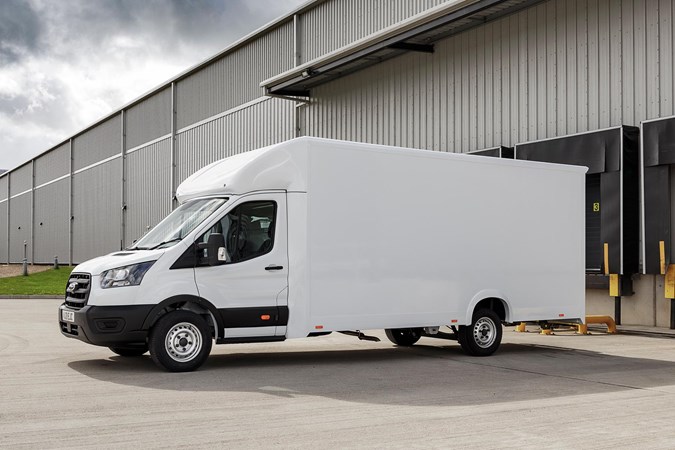
Just so you know, we may receive a commission or other compensation from the links on this website - read why you should trust us.


